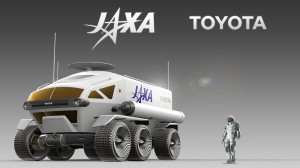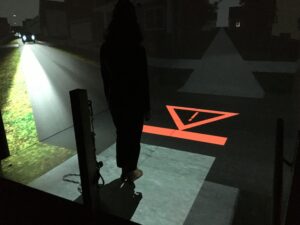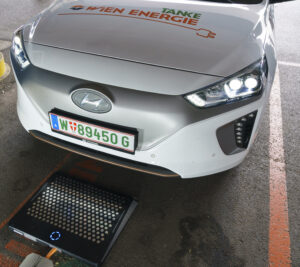
Listen to “AD #3250 – The End of The Road for The BMW i3; Toyota Fixated on Going to The Moon; Ford Joining IMSA’s GT3 Series” on Spreaker.
Follow us on social media:
Runtime: 9:20
0:08 Toyota Fixated on Going to The Moon
0:48 The End of The Road for The BMW i3
1:46 Stellantis & GAC In Talks to Revive Joint Venture
2:49 Ford Joining IMSA’s GT3 Series
3:45 Toyota Researching How Headlights Can Improve Safety
4:46 Union Pacific Adding Electric Locomotives to Its Fleet
6:08 Austria Tests Charging Electric Taxis with Inductive Charging
7:11 Hyundai Shows How Mobility Concepts Can Be Put to Use
Visit our sponsors to thank them for their support of Autoline Daily: Bridgestone, Intrepid Control Systems and Schaeffler.
This is Autoline Daily, the show dedicated to enthusiasts of the global automotive industry.
TOYOTA FIXATED ON GOING TO THE MOON
Whoever thought we’d hear this from a car company? Toyota is totally fixated on going to the moon. First it started developing a lunar rover called the Lunar Cruiser, along with Japan’s space agency. Now it’s dreaming well beyond that. Toyota is working on how people can live on the moon by 2040. And then it will turn its attention to Mars. Toyota also partnered with a company called Gitai Japan to develop a robotic arm for the Lunar Cruiser which is designed to perform inspection and maintenance tasks. Toyota hopes to transfer some of that technology back down to those of us who still live on planet Earth.
THE END OF THE ROAD FOR THE BMW i3
No surprise here. It’s the end of the road for the BMW i3. A spokesperson confirmed to Wards it will build the last i3 in July at its factory in Leipzig, Germany. The little electric car, which went on sale in 2013, never caught on. BMW only sold 250,000 during its lifetime, or about 30,000 a year worldwide. BMW stopped producing models for the U.S. market last year. The i3 was supposed to spark a carbon fiber revolution, since its structure was made completely from the material, but BMW later gave up on that idea. The i3 is essentially being replaced by the iX1 electric crossover which comes out later this year. But the name isn’t completely going away. The i3 name will be used for the electric version of the long-wheelbase 3 Series in China.
STELLANTIS & GAC IN TALKS TO REVIVE JOINT VENTURE
It sort of sounds like a couple of kids arguing in a schoolyard. “Yes I am.” “No you’re not.” And in this case, the argument is between Stellantis and its Chinese joint venture partner GAC. Last week Stellantis said it signed an agreement to raise its ownership of the joint venture from 50% to 75%. But GAC, or the Guangzhou Automobile Group, came out and denied that either one signed anything. Even so, Gasgoo reports that GAC later admitted that both companies are in talks to revive the joint venture, which so far has been something of a flop. And it’s easy to predict how this is going to turn out. Stellantis is going to get 75% of that JV.
FORD JOINING IMSA’S GT3 SERIES WITH MUSTANG GT3
The battle of Mustang vs. Corvette will be taking its fight from the streets to the track. Chevy previously revealed that it’s joining IMSA’s GT3 series in 2024, and now Ford is doing the same thing. Multimatic will build the Mustang GT3s. They’re the same folks that make the Ford GT. Ford and Multimatic will develop Mustang GT3s for both factory-backed and customer teams. The car will feature unique short-long arm suspension front and rear, a rear-mounted transaxle, carbon fiber body panels, a special aero package and a naturally aspirated 5.0L V8 that’s based on Ford’s Coyote engine. And since the Mustang GT3 won’t make its racing debut until 2024, it’s possible the GT3 version will be the debut for the new design of the next-gen Mustang.
TOYOTA RESEARCHING HOW HEADLIGHTS CAN IMPROVE SAFETY
Toyota is researching how headlight technology can help improve safety for road users. Specifically, it’s testing adaptive lights, which use multiple LEDs and computer chips to project objects onto the road. As a way to get the attention of a pedestrian or bicyclist as well as the driver, Toyota’s system puts a light box around the person and a red or white triangle with an exclamation point nearby. And this is just one possible scenario Toyota is testing, others could prove to be more effective. But Toyota says the study showed that vehicles with this kind of tech could reduce a large percentage of pedestrian deaths. Legislation passed last year that calls for NHTSA to change regulations that will allow high-tech headlights, like these, by 2023. And we’ll also note that headlights are now a deciding factor for whether or not a vehicle will earn a Top Safety Pick from the IIHS.
UNION PACIFIC ADDING ELECTRIC LOCOMOTIVES TO ITS FLEET
It’s not just cars and trucks, the whole transportation industry needs to improve emissions. So Union Pacific is investing $100 million to add 20 battery electric locomotives to its fleet. Ten of them will be made by Caterpillar, and the other ten come from the Wabtec Corporation. Union Pacific will receive the first ones at the end of 2023 and the rest get delivered in 2024. Union Pacific will operate the electric locomotives at rail yards in California and Nebraska, to test their performance in cold and warm weather. The company estimates that for every 10 battery electric locomotives used, it will eliminate 4,000 tons of carbon annually.
AUSTRIA TESTS CHARGING ELECTRIC TAXIS USING INDUCTIVE CHARGING
There’s a fascinating pilot program starting in Austria to charge electric taxis using inductive charging. And they’re putting those inductive charging pads at taxi stations. That way, the taxis can charge while they’re waiting for their next customer. And the driver never has to get out of the car. A company called Easelink developed the inductive chargers. They’re starting out with 11 kilowatts of AC, but plan to bump that up to 22 kilowatts, and also add 100 kilowatts of DC charging at 800 volts. The program is starting with a fleet of 66 Hyundai Ioniqs that can charge at 10 different taxi stands in Vienna or Graz. Even more interesting, Easelink says its inductive system can be retrofitted to any kind of electric vehicle. This could really catch on, at least in Austria. Starting in 2025 only taxis with zero tailpipe emissions will be allowed to be in service.
HYUNDAI SHOWS HOW MOBILITY CONCEPTS CAN BE PUT TO USE
Hyundai wasn’t focused on cars or trucks at this year’s CES. It was all about mobility and the Metaverse, linking the real and virtual worlds together. It’s giving a few examples of how people might use its M.Vision POP and M. Vision 2Go, which are a couple of ride-hailing and delivery vehicles. And a quick aside. Look! Another company using the name ‘Vision’ for a future concept. But anyway, it shows how these vehicles could take customers to a concert, deliver luggage to the airport before the customer even shows up or even use the displays on the vehicle windows to help pop the question to your partner.
Starting a new company can be hard. And that’s going to be the topic on Autoline After Hours this Thursday. Justin Fishkin will be on the show. He was the Chief Strategy Officer at Local Motors, the company that wanted to make cars with 3D printing. It successfully launched Ollie, a 3D printed robo taxi. But Local Motors didn’t survive. Now Justin is working at a new startup, turning waste plastic into construction material like cinder blocks. We can’t wait to hear what he has to say because the auto industry sure generates a lot of waste plastic. So join us when we go live Thursday afternoon at 3 pm eastern time.
Before we go, can you help us out? We’re more focused than ever on increasing our subscribers. So if you’re not already, it would be a great help if you subscribed. Anyway, we hope you like our content, we really like to bring you the news during the week. But that’s a wrap. Thanks for joining us.
Thanks to our partner for embedding Autoline Daily on its website: WardsAuto.com
Seamus and Sean McElroy cover the latest news in the automotive industry for Autoline Daily.













